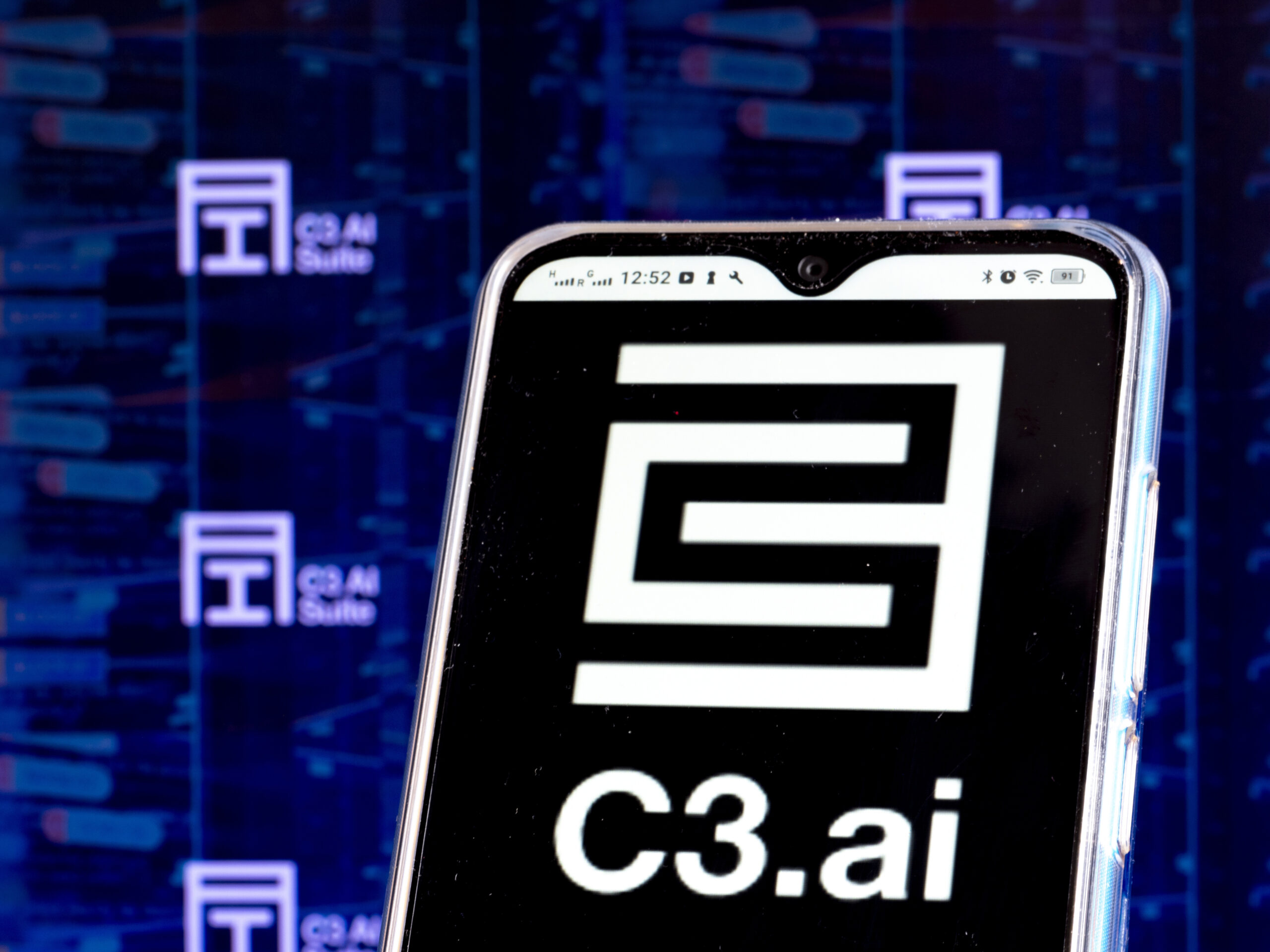Could the artificial intelligence boom propel Nvidia to a $4 trillion valuation despite investor skepticism?
When Jensen Huang spoke at Nvidia’s annual general meeting last week, he didn’t mention a drop in the stock price.
The American chipmaker, buoyed by its key role in the artificial intelligence boom, had briefly become the world’s most valuable company on June 18, but the crown quickly fell. Nvidia lost about $550 billion (£434 billion) from its peak market value of $3.4 trillion (£2.68 trillion) that week, as technology investors combined profit-taking with doubts about the sustainability of its growth. quickly, they braked.
Huang, however, spoke as CEO of a business that took 30 days this year to go from a $2 trillion valuation to $3 trillion — and sees $4 trillion emerging.
He described an upcoming set of powerful new chips, called Blackwell, as potentially “the most successful product in our history” and perhaps in all of computer history. He added that the new wave of AI would automate $50 trillion of heavy industry and described what appeared to be an endless loop of robotic factories orchestrating robots that “build products that are robotic.”
Concluding, he said, “We’ve reinvented Nvidia, the computer industry, and quite possibly the world.”
These are the kinds of words that a $4 trillion valuation and AI hype cycle is built on. Nvidia stock is making a comeback, turning over $3 trillion this week, as it remains the best way to buy into the AI boom. Is that enough to take it to $4 trillion, despite emerging investor doubts?
Alvin Nguyen, a senior analyst at research firm Forrester, said “only a collapse of the genAI market” would prevent Nvidia from reaching $4 trillion at some point — but whether it got there first before its tech rivals was a moot point. other. Currently, Microsoft – another big player in AI – and Apple are first and second respectively in terms of market size, with Nvidia third.
If OpenAI’s next big AI model, GPT-5, and other new models were surprising, the stock price would remain buoyant and could reach $4 trillion by the end of 2025, Nguyen said. But if they underperform, then the share price could be affected, given its status as a flagship for technology. A technological advance could result in less computing power being needed to train the models, he added, or interest from businesses and consumers in generating AI tools could be less strong than expected.
“There are a lot of things that are unknown and out of Nvidia’s control that could affect their path to $4 trillion,” Nguyen said. “Such as disappointment with new models coming out, improvements to models that reduce computational needs, and weaker-than-expected enterprise and consumer demand for genAI products.”
Private AI research labs like OpenAI and Anthropic — the entities behind chatbots ChatGPT and Claude — aren’t traded on public markets, leaving huge sums of money floating around in investor accounts with no way to access some of the biggest hitters. big on AI Brake generator.
Buying shares in multinationals like Microsoft or Google is already expensive and only part of an investment is related to the hot new thing. There could be a huge artificial intelligence boom, but if, for example, Google’s search advertising business weakened as a result, then the company wouldn’t necessarily be a net winner.
Nvidia, by contrast, is selling shovels in a gold rush. Despite years of investment in capacity, it continues to sell its top-end chips faster than it can produce them. Huge amounts of investment in frontier AI research flow directly from the labs and into Nvidia’s coffers, with companies such as Meta spending billions of dollars to secure Nvidia’s hundreds of thousands of GPUs (graphics processing units).
This type of chip, the company’s specialty, was once sold to enable gamers to experience crisp, smooth graphics in 3D games—and through a monumental stroke of good fortune, it turned out to be just what the latest searchers needed. to build massive AI systems such as GPT-4 or Claude 3.5.
GPUs are able to perform, at high volume and speed, the complex calculations that support the training and operation of AI tools such as chatbots. So any company that wants to build or operate a generative AI product like ChatGPT or Google’s Gemini needs GPUs. The same goes for deploying freely available AI models, such as Meta’s Llama, which also requires large amounts of chips as part of its training phase. In the case of systems known as large language models (LLM), training involves gathering large blocks of data. This teaches LLM to recognize patterns in language and estimate what the next word or sentence should be in response to a chatbot question.
However, Nvidia has never completely cornered the AI chip market. Google has always relied on its chips, which it calls TPU (for “tensor,” a property of an AI model), and others want to join. Meta has developed the Meta Training and Inference Accelerator, Amazon offers its Trainium2 chips to companies using AWS (Amazon Web Services), and Intel has produced Gaudi 3.
None of the big rivals compete with Nvidia – yet – at the absolute top. But this is not the only place where competition is taking place. A report from Information, a technology news site, highlighted the rise of “batch processing,” offering businesses cheaper access to AI models if they’re OK with waiting for their queries to be run during periods of low demand. This, in turn, allows providers like OpenAI to buy cheaper and more efficient chips for their data centers instead of focusing all their spending on the fastest possible hardware.
after promoting the newsletter
On the other hand, smaller businesses are starting to offer increasingly specialized products that beat what Nvidia can provide in a head-to-head race. Groq (not to be confused with Elon Musk’s otherwise named Grok AI, whose release sparked an ongoing trademark dispute) makes chips that can’t be used to train AI at all — but that the resulting models they use them extremely quickly. Not to be outdone, startup Etched, which just raised $120 million, is building a chip that uses just one type of AI model: a “transformer,” T in GPT (generative pre-trained transformer).
Nvidia doesn’t just need to hold its own against competition, big and small. To reach the next milestone, she must thrive. Market fundamentals are out of fashion, but if the company were rated as a traditional low-growth enterprise, even a $3 trillion market cap would require it to sell a trillion of its high-end GPUs in year, with a profit margin of 30%. , forever, noted an expert.
Even if the AI industry grows enough to justify this, Nvidia’s own profit margin may be harder to defend. The company has the chip designs to keep the lead, but the real bottlenecks in its supply chain are the same as for the rest of the industry: in advanced semiconductor foundries, the kind operated by Taiwan’s TSMC, America’s Intel, China’s SMIC and a precious few others around the world. Notably not on that list is Nvidia itself, which is a TSMC customer. No matter how advanced Nvidia’s chips are, if it has to absorb the rest of TSMC’s order book to meet demand, then profit will inevitably flow as well.
Neil Wilson, chief analyst at brokerage firm Finalto, said the case against Nvidia – market lingo for a sustained share price decline – rested on the argument that once the company worked through its order book, it would return to more a little frantic. demand levels.
“All of their customers have been rushing to order GPUs, but they won’t be doing that forever,” Wilson said. “Customers over-order and then start cancelling. It’s a sweet spot right now, but it’s unsustainable.” He could see Nvidia reaching $4 trillion and beyond, but “probably not at the current pace.”
Jim Reid, Deutsche Bank’s head of global economics and thematic research, released a note this week asking if Nvidia was the “fastest-growing large company of all time?” Noting that Nvidia went from $2 trillion to $3 trillion in 30 days, Reid said by contrast, it took Warren Buffett 60 years to get Berkshire Hathaway close to $1 trillion.
Still, in a world of low productivity — a measure of economic efficiency — and declining working-age populations and rising government debts, the economic promise of AI was welcome, Reid said.
“If AI is the catalyst for a fourth Industrial Revolution, that would be very good news,” he wrote. “If not, then the markets will eventually have a big problem.”
There is more at stake than winning a $4 trillion race.
#artificial #intelligence #boom #propel #Nvidia #trillion #valuation #investor #skepticism
Image Source : www.theguardian.com


